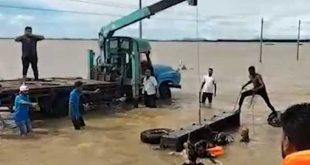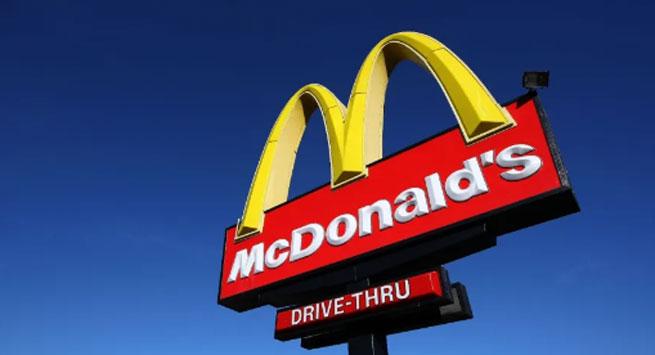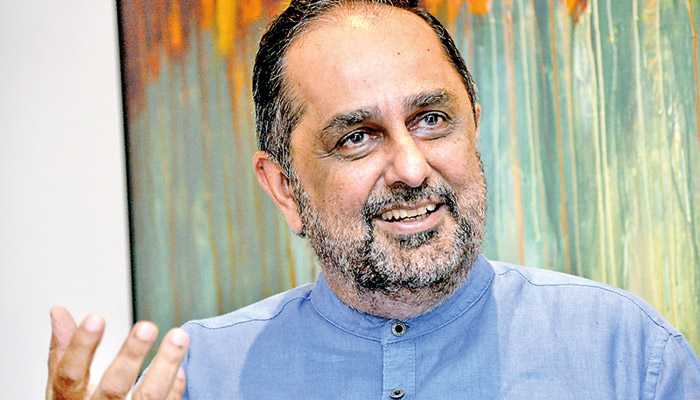“The war on drugs has always been a pretext for political repression and social control.” Alexander Cockburn, Counterpunch editor
Last Saturday, a US consulate employee and his pregnant wife were gunned down in their SUV in Ciudad Juarez while their seven month old baby watched from the backseat. Just minutes later, another consulate employee was killed at point-blank range in the northern part of the city. Both shootouts took place in broad daylight and were executed with robotic precision. It was clearly the work of professionals.
The only thing that stands out about these incidents, is that two of the victims were American citizens. Otherwise, it’s just “business as usual” in the murder capital of the western hemisphere. Juarez has been rocked by a wave of gangland-style killings for the last two years. The statistics are mind-boggling. 50 people were killed last weekend alone (4 of the victims were beheaded) and there have been more than 500 homicides since the beginning of 2010. All told, more than 19,000 people have been killed since Mexican President Felipe Calderon took office in 2006. Juarez is presently the most dangerous place in the world, worse has Baghdad or Kabul.
The violence in Juarez is not accidental. It’s the result of a deeply-flawed US/Mexico policy. The Merida Initiative, which was signed in 2007 by President George W. Bush and Calderon, has led to the militarization of law enforcement which has intensified the battle between the state and the drug cartels. Plan Mexico–as Merida is also called–has increased the incidents of gang-related crime and murder by many orders of magnitude. The military is uniquely unsuited for tasks that should be handled by criminal investigators or the police. That’s why the death toll keeps rising. The bottom line, is that the troubles in Juarez have more to do with Plan Mexico than they do with drug-trafficking. This is “policy-driven” carnage and the United States is largely to blame.
Shortly after he took office in 2006, Calderon began using the military to battle Mexico’s powerful narco-mafia. Since then, there’s been a steady escalation in troop deployments and violence across the country. The Calderon strategy has been universally condemned except (of course) by US think-tank ideologues who applaud the bloodletting as proof of its success. Laura Carlsen, the director of the Americas Policy Program in Mexico City, was recently interviewed about Plan Mexico and asked whether the policy has changed under Barack Obama. Here’s what she said:
Laura Carlsen: The Obama administration has supported Plan Mexico and even requested, and received from Congress, additional funds beyond what the Bush administration requested. In the three years since Calderon launched the war on drugs in Mexico with the support of the US government drug related violence has shot up to over 15,000 executions and formal reports of violations of human rights have increased sixfold…..Washington recognizes serious problems with the drug war model and yet continues to claim, absurdly, that the rise in violence in Mexico is a good sign–it means that the cartels are feeling the heat..
Plan Mexico… grew out of the extension of NAFTA into security areas, known as the Security and Prosperity Partnership…. It was designed in Washington as a way to “push out the borders” of the US security perimeter, that is, that Mexico would take on US security priorities including policing its southern border and allowing US companies and agents into Mexico’s intelligence and security operations.” (Laura Carlsen)
NAFTA transformed Juarez into a manufacturing hub where assembly plants and electronics companies mass-produced all types of goods that were shipped to the United States tariff-free. In the last few years, however, corporations have exited Mexico en masse seeking cheaper labor costs in China. According to the Wall Street Journal: “Since 2005, 10,600 businesses—roughly 40% of Juárez’s businesses—have closed their doors, according to the country’s group representing local chambers of commerce.” Free trade has left Juarez in ruins which has only added to the current troubles.
Laura Carlsen again: “The Bush administration used the counterterrorism paradigm to extend US presence in strategic areas. In Mexico, the idea was to open up lucrative defense and intelligence contracts while aiding the rightwing government, which still faced serious questions of legitimacy due to unresolved accusations of fraud in the 2006 elections.”
Carlsen confirms that Plan Mexico is not so much about the fictitious war on drugs as it is about creating a business-friendly authoritarian regime that will crush any threat to state/corporate power. By throwing his support behind the current policy, Obama is merely picking up where his predecessor G.W. Bush left off.
Calderon has largely complied with whatever directives he’s gotten from Washington. In practical terms, he’s assumed the mantle of “provincial governor” charged with carrying out US security operations south of the border; a regular Mexican Karzai. And he has performed reasonably well too, which is to say that he’s turned the country to a free-fire zone where anything-goes as long as the billions in US aid continues to roll in. A recent survey shows that more than half of the population now believes that Calderon has made the country more dangerous. In an interview with Democracy Now, author Charles Bowden describes what life is really like for the people who live in Juarez and have to adjust to the daily violence:
A CITY WHERE PEOPLE LIVE IN CARDBOARD BOXES
CHARLES BOWDEN: “This is in a city where people live in cardboard boxes sometimes. Ten thousand businesses have given up and closed in the last year. Thirty to sixty thousand people from Juárez, mainly the rich, have moved across the river to El Paso for safety, including the mayor of Juárez, who likes to bunk in El Paso. And the publisher of the newspaper there lives in El Paso. Somewhere between 100,000 and 400,000 people simply left the city. A lot of the problem is economic, not simply violence. At least 100,000 jobs in the border factories have vanished during this recession because of the competition from Asia. There’s 500 to 900 gangs there, estimates vary.
So what you have is about 10,000 federal troops and federal police agents all marauding. You have a city where no one goes out at night; where small businesses all pay extortion; where 20,000 cars were officially stolen last year; where 2,600-plus people were officially murdered last year; where nobody keeps track of the people who have been kidnapped and never come back; where nobody counts the people buried in secret burying grounds, and they, in an unseemly way, claw out of the earth from time to time. You’ve got a disaster. And you have a million people, too poor to leave, imprisoned in it. That’s the city.” (Democracy Now)
The war in Juarez isn’t about narcotics; it’s about a foreign policy that supports proxy-armies to impose order through police-state repression and militarization. The media keeps reiterating the same tedious refrain about the ongoing “drug war”, but it’s all baloney. The so-called war on drugs–like the war on terror–is merely the public relations mask which conceals the political agenda. Regional hegemony is the ostensible goal, and extreme violence is the cornerstone upon which the entire policy rests. Here’s a clip from an article in the Independent which sums up the futility of the drug war and its corrosive effect on government institutions:
“The outlawing and criminalizing of drugs and consequent surge in prices has produced a bonanza for producers everywhere, from Kabul to Bogota, but, at the Mexican border, where an estimated $39,000m in narcotics enter the rich US market every year, a veritable tsunami of cash has been created. The narcotraficantes, or drug dealers, can buy the murder of many, and the loyalty of nearly everyone. They can acquire whatever weapons they need from the free market in firearms north of the border and bring them into Mexico with appropriate payment to any official who holds his hand out.
And drug-related bribery is gnawing deep into US institutions, as Calderon has long alleged. Thomas Frost of the US Dept of Homeland Security says that last year the department accused 839 of its own agents of corruption…. the FBI … dug up more than 400 public corruption cases that resulted in well over 100 arrests and more than 130 state and federal prosecutions…
The narcos have penetrated the US embassy in Mexico City (as they had previously the one in Colombia’s capital, Bogota), their funds allowing them to siphon out a stream of intelligence about future operations against the narcos.” (“The US-Mexico border: where the drugs war has soaked the ground blood red”, Hugh O’Shaughnessy The Independent)
The real reason US powerbrokers want to militarize Mexico is to counter the leftist social movements which have sprouted up everywhere in Latin America. The administration wants to get a foot in the door so they can roll back the advances that have been made in health care, civil liberties, education, wealth redistribution and land reform. The US wants to quash the burgeoning unions, the indigenous communities, and pro-democracy groups which have taken root and replaced the kleptocratic regimes which were propped up by Washington. The Merida Initiative is an attempt to return to the dark days of oligarchy and torture, of death squads and “dirty wars”. Clearly, Uncle Sam will not be easily deterred; it will take determined resistance from grassroots organizations and engaged citizens.
As for the faux “drug war”; no one has written more persuasively on the topic than Counterpunch editor, Alexander Cockburn. Here’s an extended excerpt from an article written by Cockburn back in June, 1998, titled “The Drug War: a War on Poor, Lower Classes”.
“United Nations’ special session in New York on drugs. Hundreds of prominent people from around the world signed on to the view that the drug war has been a disaster and “the time has come for a truly open and honest dialogue about future global drug control policies.”
The statements to which the signatories put their names are mostly unimpeachable common sense: “Drug war politics impede public health efforts to stem the spread of HIV, hepatitis and other infectious diseases. Human rights are violated, environmental assaults perpetrated and prisons inundated with hundreds of thousands of drug law violators.”
All true, and every phrase repeated, proved and doubly proved year after year.
So why does the drug war grind on, decade after decade, immune to reason, often grotesque in its hypocrisy?…
The answer is plain enough, particularly if one takes a look at the history of drug wars over the past 150 years. These drug wars are either enterprises that expand the drug trade or pretexts for social and political repression. In either case, the aim of halting the production, shipment and consumption of drugs is not on the agenda.
Domestically, the “drug war” has always been a pretext for social control, going back to the racist application of drug laws against Chinese laborers in the recession of the 1870s when these workers were viewed as competition for the dwindling number of jobs available. ….
President Nixon was helpfully explicit in his private remarks. H.R. Haldeman recorded in his diary a briefing by the president in 1969, prior to launching of the war on drugs: “Nixon emphasized that you have to face the fact the whole problem is really the blacks. The key is to devise a system that recognizes this while not appearing to.”
So what was “the system” duly devised? The 1986 Anti-Drug Abuse Act, with its 29 new minimum mandatory sentences, and the 100-to-1 sentencing ratio between possession of crack and powder cocaine, became a system for locking up a disproportionate number of black people.
So to call for a “truly open and honest dialogue” about drug policy, as all those distinguished signatories in the advertisement requested, is about as realistic as asking the U.S. government to nationalize the oil industry. Essentially, the drug war is a war on the poor and the dangerous classes, here and elsewhere. How many governments are going to give up on that? (“The Drug War: a War on Poor, Lower Classes”, Alexander Cockburn, June 11, 1998, LA Times) http://www.hartford-hwp.com/archives/28/088.html
Obama knows that the war on drugs is a sham, but that won’t stop him from committing billions more to Plan Mexico. In fact, it’s already a done-deal. What the administration wants is a “hemispheric security policy” which creates a hospitable environment for resource extraction and corporate exploitation. And, they don’t care how many people get killed in the process. That’s why the death toll in Juarez will to continue to rise
Post Disclaimer | Support Us
Support Us
The sailanmuslim.com web site entirely supported by individual donors and well wishers. If you regularly visit this site and wish to show your appreciation, or if you wish to see further development of sailanmuslim.com, please donate us
IMPORTANT : All content hosted on sailanmuslim.com is solely for non-commercial purposes and with the permission of original copyright holders. Any other use of the hosted content, such as for financial gain, requires express approval from the copyright owners.
 Sri lanka Muslims Web Portal Sri Lanka Muslims News Center
Sri lanka Muslims Web Portal Sri Lanka Muslims News Center



